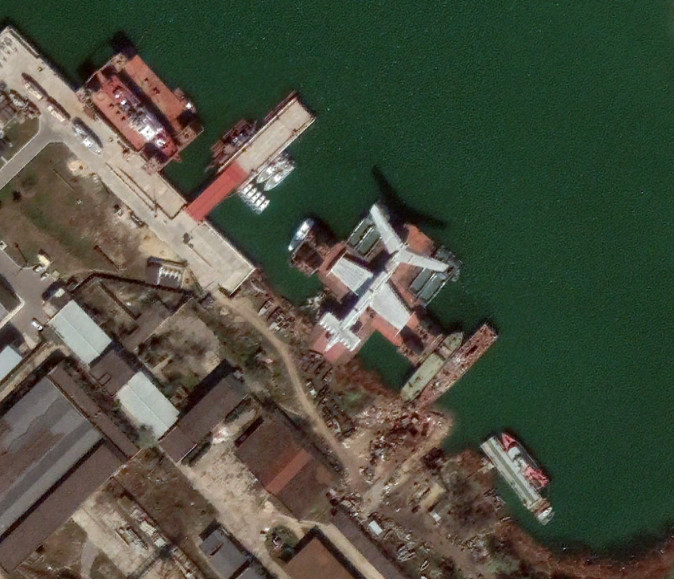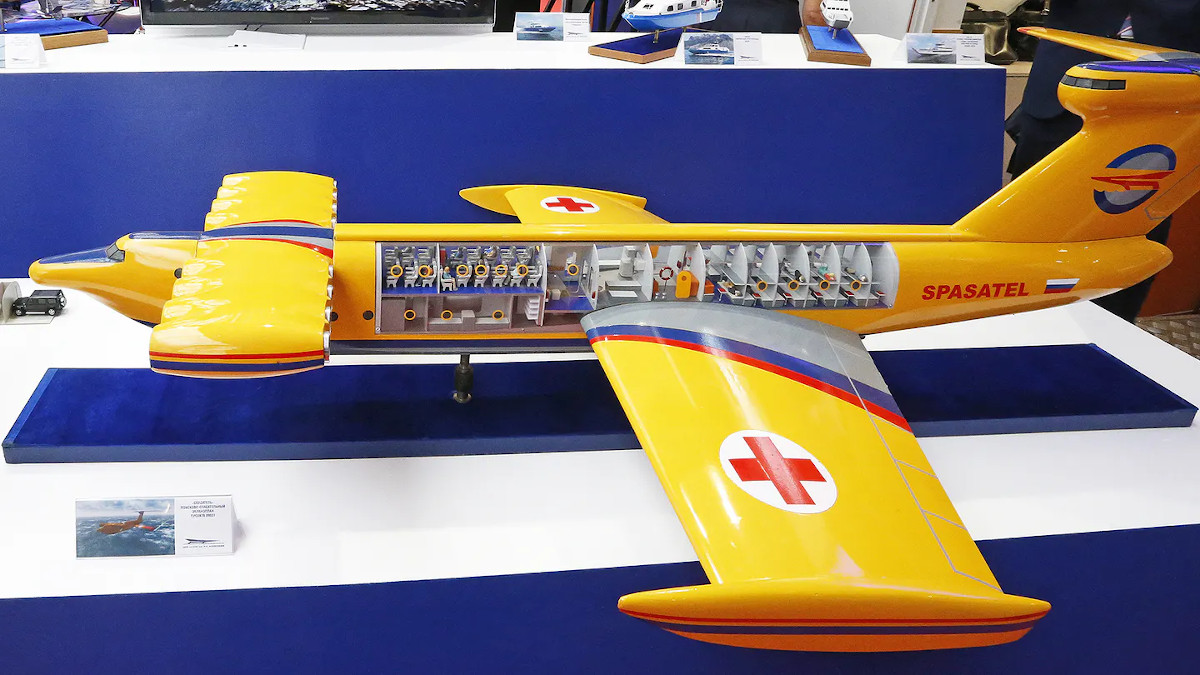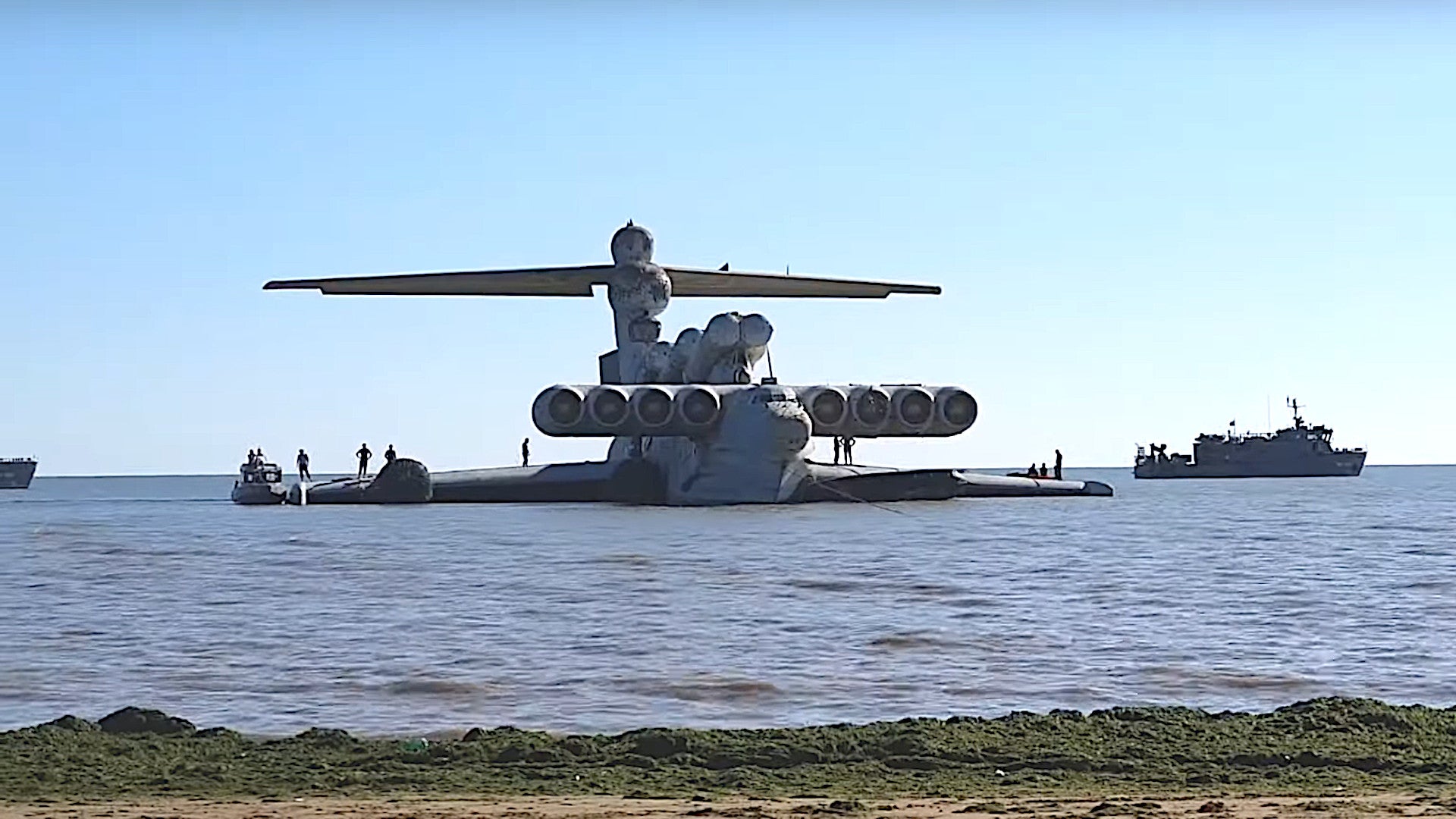Russia’s only completed Project 903 Lun class ekranoplan, a type of wing-in-ground-effect craft, recently floated out onto the Caspian Sea for the first time in decades and probably for the last time ever. Designed by the Soviet Union during the latter stages of the Cold War as a high-speed anti-ship missile craft, it only saw very limited service and is now going on display at Patriot Park in the city of Derbent in Russia’s semi-autonomous republic of Dagestan.
On July 31, 2020, the Russian Ministry of Defense announced that the ekranoplan, also known as MD-160, had arrived in Derbent after a 14-hour journey south from the Russian Navy’s base in Kaspiysk, which is also in Dagestan, where it has been languishing in disrepair since it was withdrawn from service sometime in the late 1990s. It took a day to prepare the craft, which is non-operational at present, for the trip and a tug towed it to its new home. The plan to send MD-160 to Derbent had first emerged publicly in January.

The primary construction of MD-160, which had a maximum takeoff weight of 837,757 pounds, began at the Krasnoye Sormovo plant along the Volga River in the city of Nizhny Novgorod, more than 940 miles north of Kaspiysk, in 1986. It was powered by eight Kuznetsov NK-87 turbofan engines, each with a maximum thrust rating of 28,600 pounds, mounted in two banks of four engines on each side of the forward fuselage.
Wing-in-ground-effect designs are effectively very large aircraft that would primarily fly very close to the surface. They are generally flying boats, though, which allows for very efficient sustained high-speed flight, because it is easier and safer to operate them over water. However, any large flat space, including ice, will technically provide a suitable operating environment.
Work on MD-160 was finished in 1991, just in time for the collapse of the Soviet Union, afterwords it was transferred to the Capsian Sea Flotilla, which had become part of the new Russian Navy. The Capsian Sea Flotilla had already been tasked with testing and evaluating ekranoplans under the Soviet Union, particularly the massive Korabl Maket, or “Ship Prototype,” better known as the Caspian Sea Monster, which arrived in 1966 and operated in the region until it was destroyed in an accident in 1980.

The Caspian Sea Monster had a maximum takeoff weight of 1,199,315 pounds and was powered by 10 Dobrynin VD-7 turbojets, each rated at 28,670 pounds of thrust. It held the title of the largest and heaviest aircraft in the world until the Soviet Union’s Antonov An-225 Mriya flew for the first time in 1988.
While the Capsian Sea Monster had been largely a research and development platform, the Lun class, which was originally expected to comprise eight examples in total, was to be a combat craft. The design featured six P-270 Moskit anti-ship missiles, also known to NATO as the SS-N-22 Sunburn, mounted in pairs on top of the central fuselage. A large surface search radar was installed in the tail. These ekranoplans were intended to launch high-speed attacks on hostile surface warships, while using their low-level flight profile and speed to enhance their survivability.

However, Russia’s wing-in-ground-effect force never came to be. The economic turmoil in Russia that followed the fall of the Soviet Union led to the cancellation of numerous military projects.

Even before the Soviet Union fell, there were questions about the future of the Lun class. A second example was under construction, but the Soviets had already decided to build it as an unarmed missile resupply variant to support MD-160. After the Soviet nuclear submarine K-278 Komsomolets sank in 1989, a proposal emerged to change its configuration again to one of search and rescue and mobile hospital platform, dubbed Spasatel, or “Rescuer.” You can read more about the K-278 accident, which has left the submarine leaking radiation on the bottom of the Barents Sea to this day, in this past War Zone piece.

Russia revived the idea of finishing Spasatel in 2017 with a focus on operations in the increasingly strategic Arctic region, but no work to this end appears to have happened so far. This craft was reportedly nearly complete when the project came to an indefinite halt in the 1990s, but it has sitting in Nizhny Novgorod ever since and looks to be in questionable condition today. In 2018, there were also reports that the Russian military might be interested again in fielding missile-armed ekranoplans, but there have been no clear developments in this regard since then.
Whatever Russia’s future ekranoplan plans might hold, the only completed example of the Lun class appears to have taken its last trip, but will now hopefully be better preserved as the interesting piece of history that it is.
Contact the author: joe@thedrive.com
